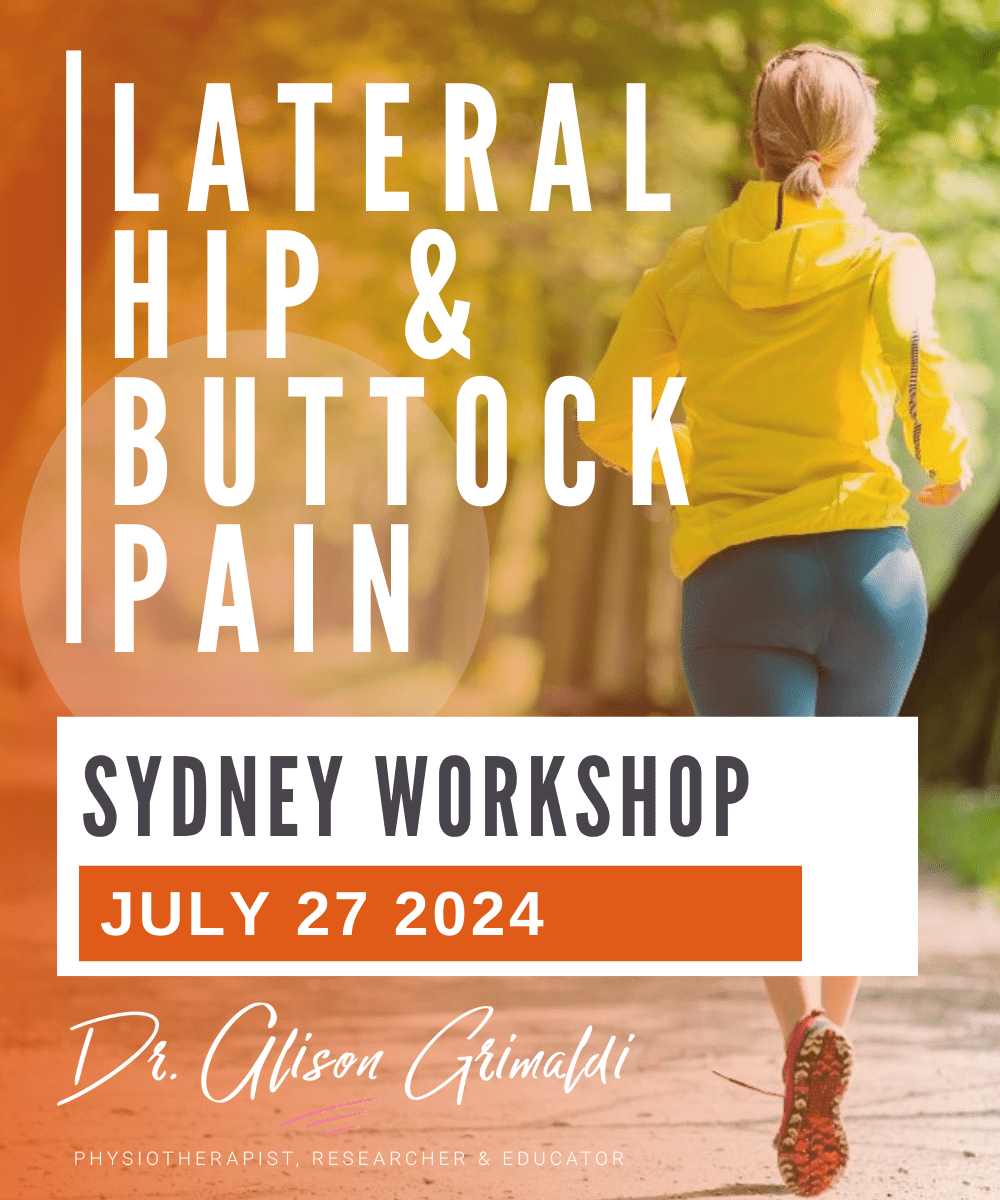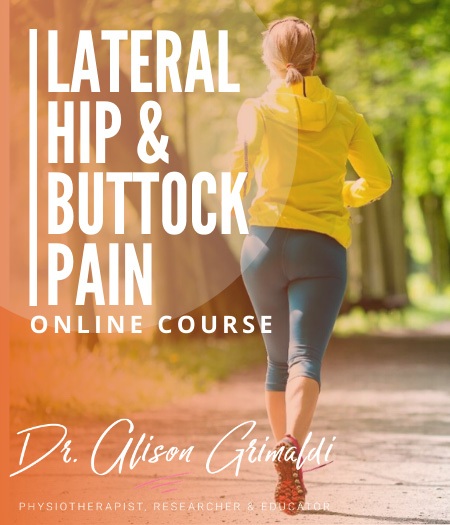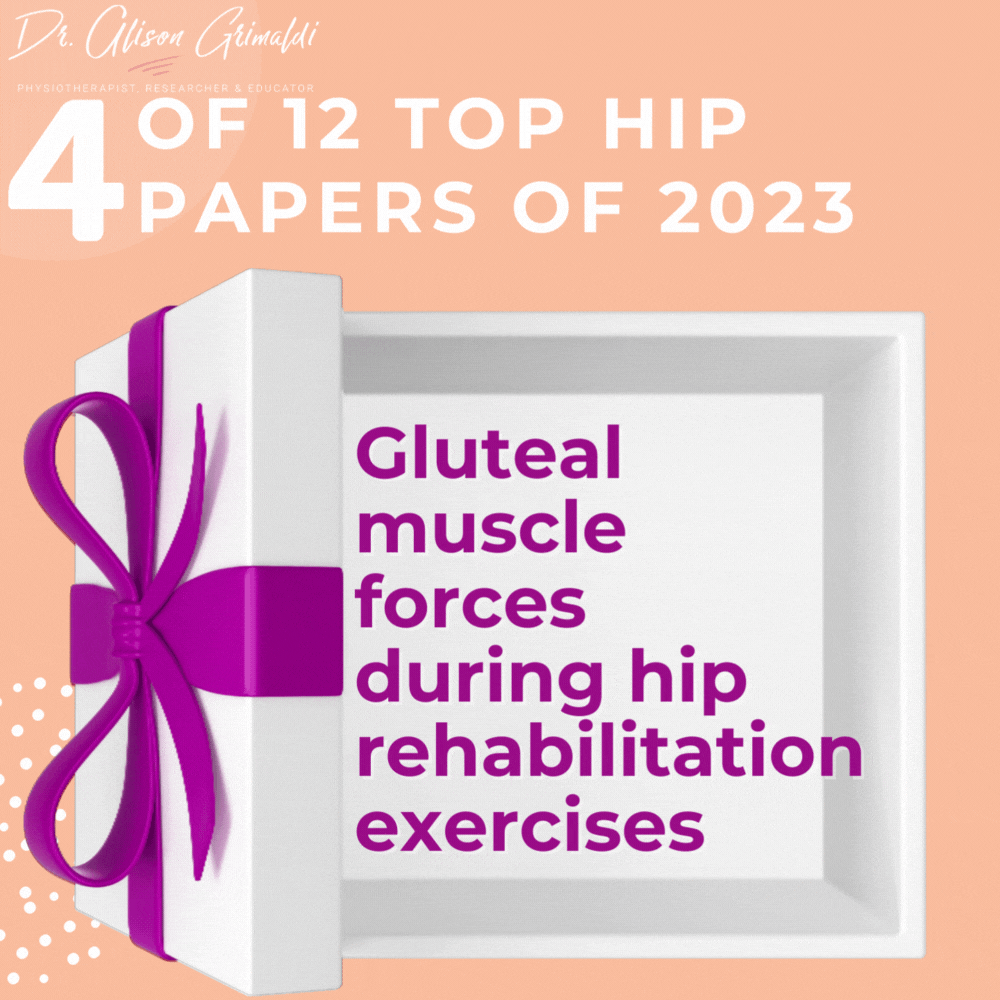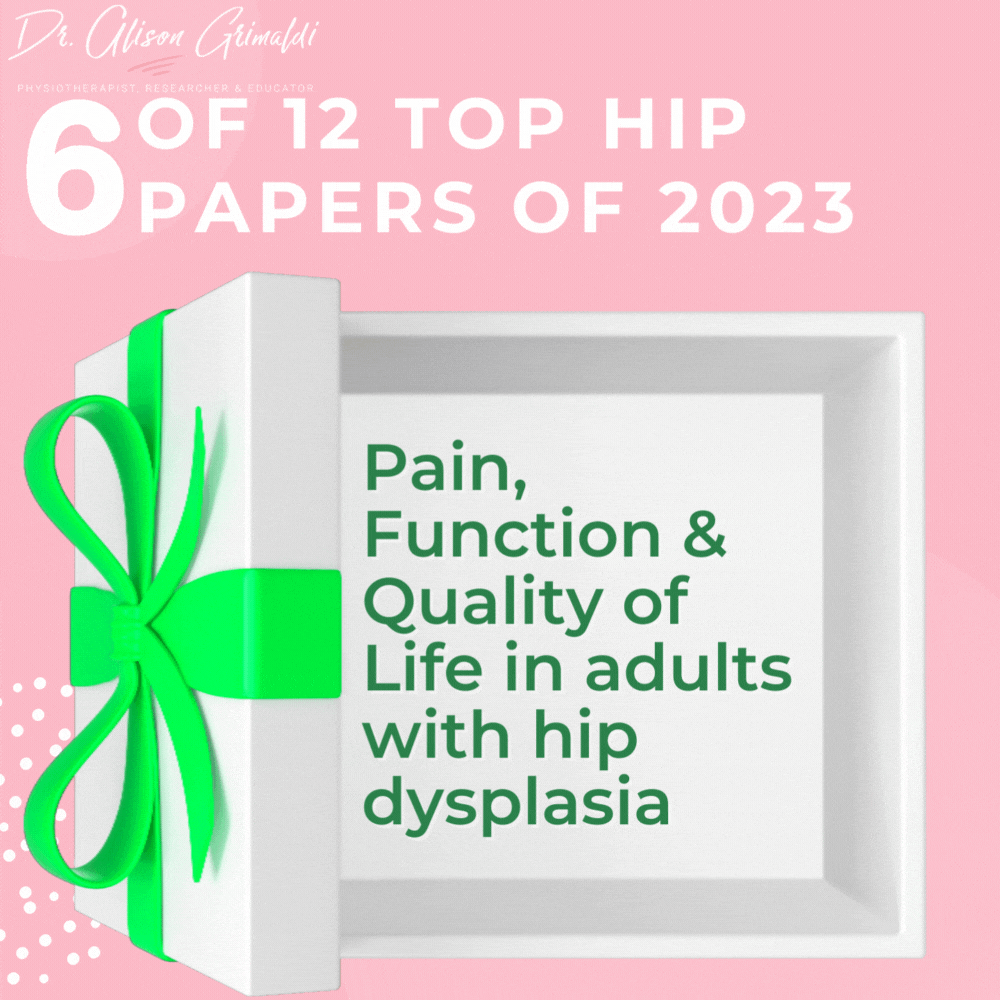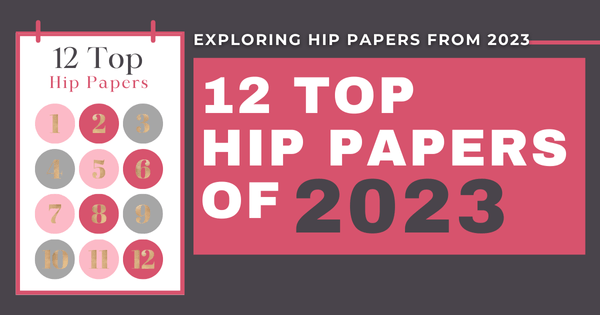5 of 12 Top Hip Papers of 2023 | Predicting success of gluteal tendon surgical repair

It's day 5 of my 12 Top Hip Papers series of miniblogs from 2023! If you missed any of the previous days, you'll find a link at the bottom of this page to work backwards, or you can visit the main pain - 12 top papers of 2023. For day 5 we'll be taking a look at a study that developed a scoring tool for predicting clinical success or failure after surgical repair of gluteus medius &/or minimus tendon tears.
Can't make the workshop? Do the Online Course

For your convenience, we have also developed this content into a FREE 31-page full colour ebook!
Packed full of 12 Top Hip Papers - peer reviewed scientific papers from 2023, that have contributed to our understanding of hip conditions and/or the assessment or management of hip pain or injury.

5 of 12 Top Hip Papers of 2023: Predicting clinical success or failure after surgical repair of gluteus medius &/or minimus tendon tears1
Do you sometimes see patients with gluteal tendon tears and wonder if they might be a surgical candidate? And what the likely outcomes might be? A scoring tool to predict surgical success or failure may help guide your treatment decisions - time to try surgery? or better to continue with non-surgical treatment?
Study Aim:
The aims of this study were to:
- 'identify patient preoperative history, exam, and imaging characteristics that increase risk of postoperative failure of gluteus medius/minimus repair, and
- to develop a decision-making aid predictive of clinical outcomes for patients undergoing gluteus medius/minimus repair.'1
What was done:
- Predictors of failure following surgical gluteal tendon repair were verified on logistic regression. A predictive scoring model, the Gluteus-Score-7, was generated to guide treatment-decision making. Data was collected retrospectively from 142 surgical patients with at least a 2 year follow up period.
Factors considered in the analysis:
- MRI findings - severity of tendon tears
- Baseline demographic data: sex, age, body mass index (BMI)
- Pre-op characteristics: physical exam findings, smoking status, symptom duration, opiate use, use of injections/physical therapy, workers compensation status, diabetes, past spine surgery or history of back pain, and psychiatric history
- Intra-operative findings
- Patient Rated Outcome Measures: Modified Harris Hip Score (mHHS), Hip Outcome Score (HOS), iHot-12, Pain Visual Analague Scale (VAS)
Definitions of Failure & Success:
Failure: undergoing revision surgery within 2 years or not achieving both the minimal clinically important difference (MCID) and the patient acceptable symptom state (PASS).
Success: no revision and reaching both the MCID and PASS
Key Findings:
- There was a failure rate of 21% after gluteus medius/minimus tendon repair.
- The factors that were found to be significant independent predictors of surgical failure were:
- Grade of gluteus medius/minimus tendon tear
- Smoking
- Psychiatric history
- Back pain, and
- Antalgic/Trendelenburg gait
- Odds ratios are outlined in the graphic below. An odds ratio (OR) is the measure of association between the factor and a failed outcome. The highest OR was for a full thickness gluteus tendon tear with ≥ 2cm retraction - OR of 6.6, indicating a 6.6 times increase in the odds of failure of surgery.
- These factors were included in the Gluteus Score - 7 (GS-7), a scoring system with a maximum of 7 points. A full thickness tear with ≥ 2cm retraction would attract 3 points as it is the strongest factor.
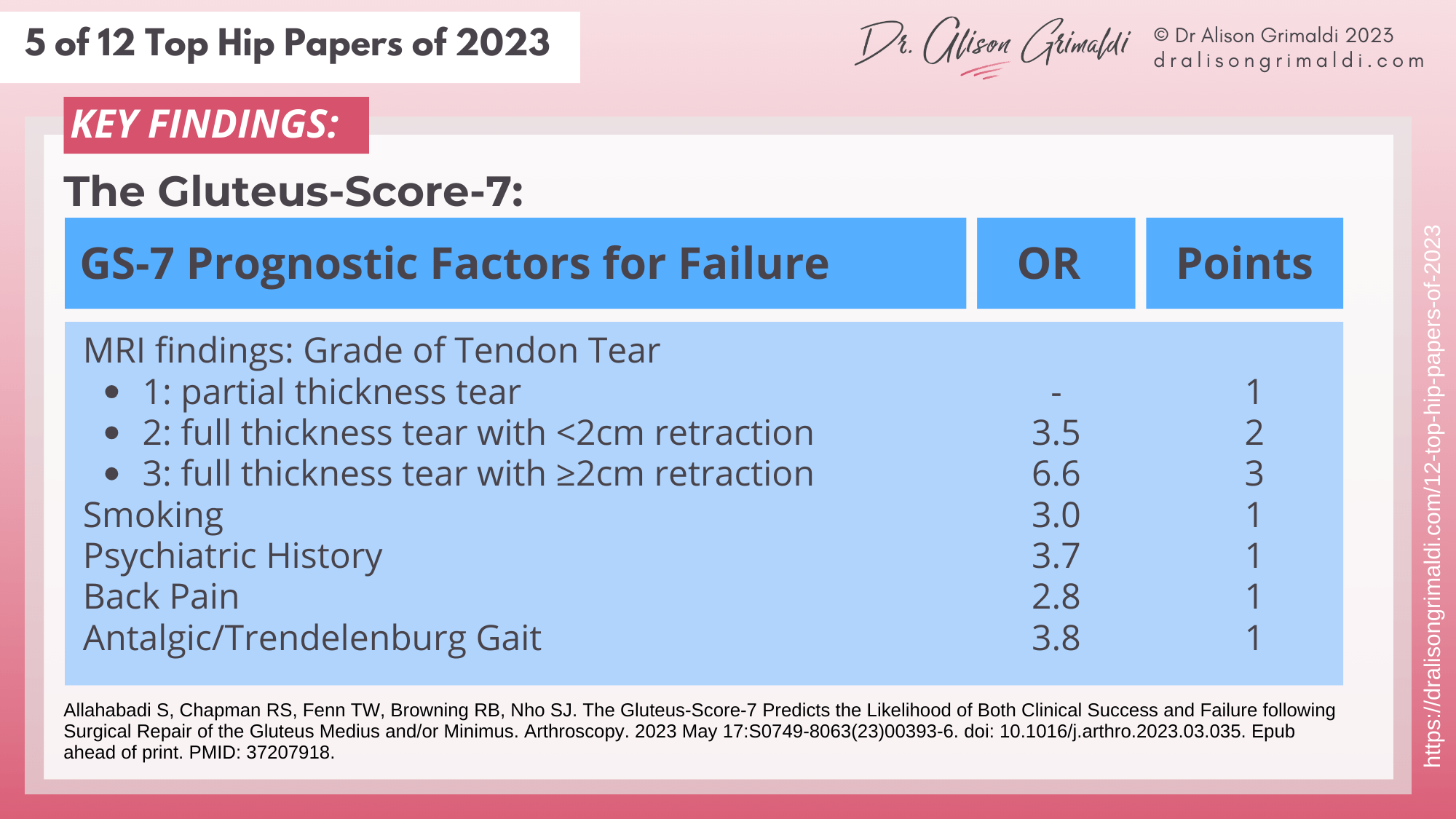
Interpreting the Gluteus-Score-7:
-
A score of ≥4/7 points was associated with risk of failure.
-
A score <2/7 points was associated with clinical success.
Clinical Implications:
- The decision to progress to surgery for gluteal tendon tears needs careful consideration in light of the relatively high failure rate (21%).
- The GS-7 may be a useful tool to assist with clinical decision making.
- The GS-7 should only be used as a guide, as individual patients may still have success with higher scores and vice versa.
The GS-7 is a 7-point score using independent predictors of outcome following gluteal tendon repair. Note that the strongest factor predicting failure is a more severe tear - a group that might be in greater need or repair. Scores of <2/7 on the GS-7 predict higher odds of surgical success but these are patients with lower severity of tendon pathology who are most likely to succeed with non-surgical treatment. In addition, the more co-morbidities, the greater the chances of surgical failure. The aim is therefore to ensure a good trial of rehabilitation prior to considering a surgical intervention for gluteal tendon tears.
Like to learn more about non-surgical management of gluteal tendinopathy and gluteal tendon tears?
In this course, you can find detailed information on pathoaetiology, assessment and management of gluteal tendinopathy, and other buttock pain conditions. To learn more, take the lateral hip and buttock pain online course, or join me in an online or practical lateral hip and buttock pain workshop.
This online course is included in Hip Academy and Hip Academy members receive discounts for online workshops.
I hope you enjoyed the infographics and key learnings from Day 5 of my 12 Top Hip Papers of 2023. There are 7 more papers in this series, so use the navigational graphics below, to see what other top papers and infographics I have for you!

Have you heard about Hip Academy?
Enjoy the benefits of a world class educational Hip Program, specifically designed by Dr Alison Grimaldi to help improve your knowledge surrounding the Hip and Pelvis, and become an expert in your field.
With all Hip Courses included, enjoy all the extra inclusions, including; access to the entire eBook series, growing video library, expanding PDF resource centre, regular member meetings, forums + lots more!

